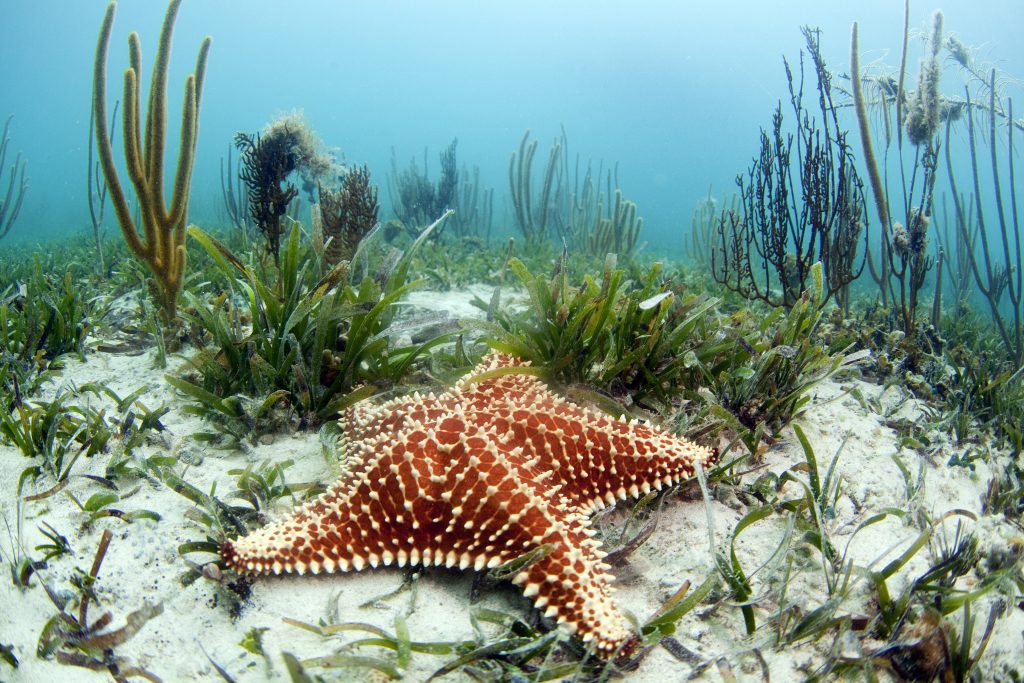Marine Protected Areas
Marine protected areas (MPAs) are a critical management tool to support reef resilience by addressing local threats.
A MPA is defined as a “clearly defined geographical space, recognized, dedicated, and managed through legal or other effective means, to achieve the long-term conservation of nature with associated ecosystem services and cultural values.” ref
There are different types of MPAs ranging from ones that are protected from all extractive and destructive uses (also referred to as "no-take zones" or "marine reserves"), to ones that allow multiple uses (e.g., tourism, recreational fishing, research). The level of protection may also vary temporally with restriction of certain uses only enforced at certain times of the year (e.g., a fish spawning season).

Sea star in a protected seagrass bed in Cuba. Photo © Ian Shive
MPAs can help to:
- Manage overfishing or extraction of key reef organisms such as herbivores
- Support the control of threats such as those associated with tourism and shipping, thus supporting coral health and making corals better able to cope with climate change impacts
Refer to the Coral Reef Resilience Online Course Lesson 6: Management Strategies for Resilience for more details on reef management strategies.